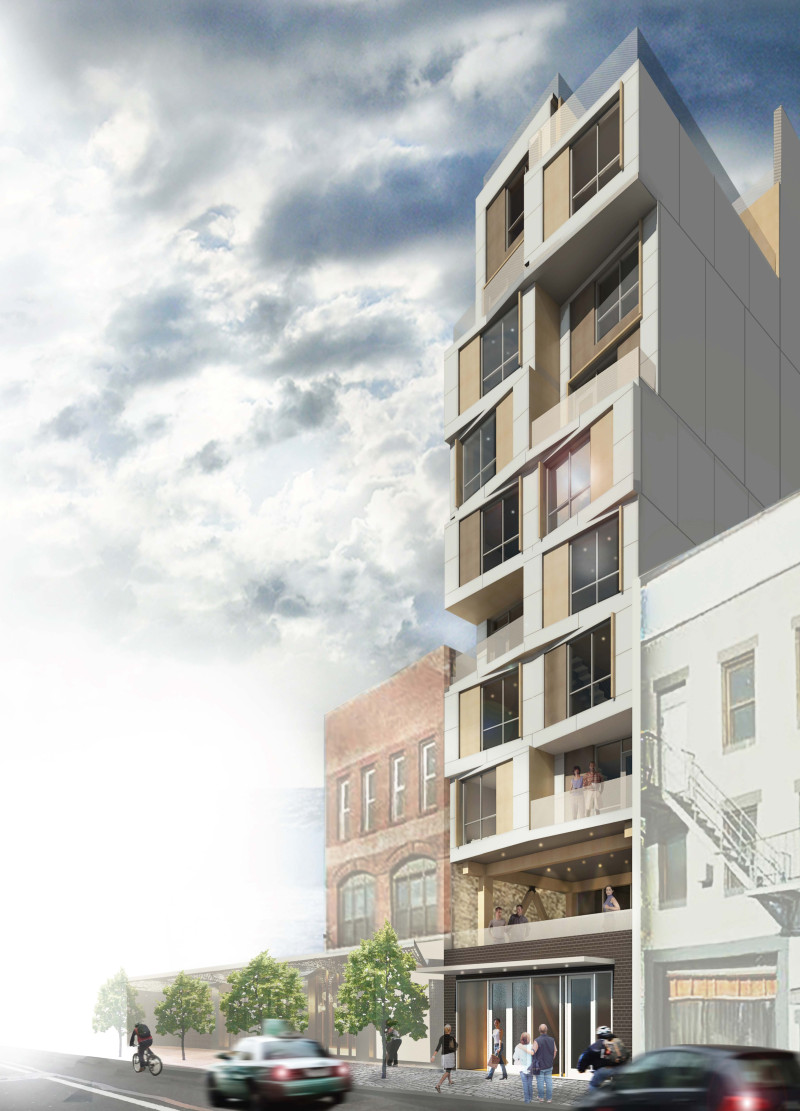5 key facts about this project
Architecturally, The Grove utilizes a contemporary design language that is characterized by its thoughtful integration of materiality and form. The building features a timber construction approach, which is sustainable and efficient. This choice not only aligns with ecological building practices but also brings a warm and inviting aesthetic to the urban context. The project incorporates insulated wood panels and a rain screen panel system, contributing to both the structural integrity and energy efficiency of the building.
Unique Design Approaches in Community Integration
The Grove distinguishes itself through its dedication to community integration. The ground and lower floors feature public program spaces designed to engage both residents and the surrounding neighborhood. This partitioning of space encourages social interaction and dissolution of boundaries between public and private realms. The modular arrangement of residential units—studios, studio lofts, and one-bedroom options—promotes diversity in living arrangements while maintaining an efficient layout, essential in urban residential design. These features prioritize functionality and accessibility for a range of inhabitants.
Sustainable Practices in Architectural Design
Sustainability is a cornerstone of The Grove's architectural design. The project incorporates water management systems that address rainwater runoff and promote ecological conservation. Energy-efficient solutions enhance the building's environmental performance, reducing the carbon footprint of residential living. The focus on timber not only aligns with sustainability goals but also supports a faster construction timeline while providing improved thermal performance.
For those interested in exploring the architectural details of The Grove, further examination of architectural plans, sections, and design specifics will yield comprehensive insights into the innovative ideas that define this project. The design's emphasis on community building and sustainability positions The Grove as a relevant model in contemporary urban architecture.


























